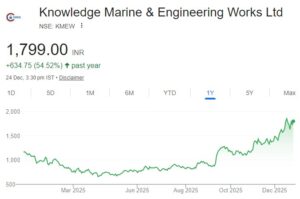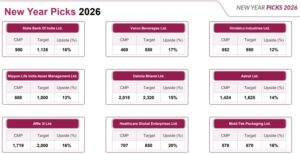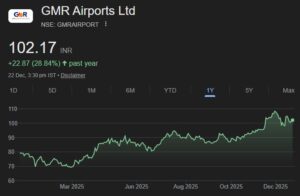

Raamdeo Agrawal’s wisdom is one that has come from learning and experience. In an interview to CNBC-TV18 he has given valuable tips on how to pick winning stocks and develop the temperament required to hold the stocks for the long-term.
(i) Don’t shun high PE/ “expensive” stocks if they continue to be dominant and retain the potential to make large profits in the foreseeable future:
This is a favourite and recurring theme with Raamdeo Agrawal. He pointed out that what you have to buy are stocks that are making “uncommon/ abnormal” profits because the stock prices reflect the profits that the companies are making. It so happens, he said, that the companies which make a lot of money are already expensive and trading at high P/Es such as ITC , Nestle , Hindustan Unilever (HUL) and other dominant companies.
Such companies have made a lot of money in the past and will continue to make a lot more money in the future. So, to avoid buying them in the mistaken belief that they are “expensive” is not sensible, he said.
(ii) Spot them young and hold for the long-term:
Raamdeo Agrawal cited two examples to prove his point of how a buy-n-hold strategy for powerhouse stocks leads to great wealth.
In 1988, ITC had a market capitalisation of Rs 117 crore. Today, 25 years later, it has a market capitalisation of Rs. 2,35,400 crore. This means that if you had invested Rs. 1 lakh in ITC, your investment would be worth Rs. 20.11 crore, not counting dividends.
Similarly, when Hero Honda started out, you could have bought the entire company for only Rs. 22 crore. Today, Hero Honda is worth Rs 42,000 crore, giving you an appreciation of 2,500 times.
(This reminds me of the similar priceless advice given by Tom and Kenneth Gardner on how to spot these potential powerhouses in their quest for the 100-bagger Amazon stock.)
However, because finding these kinds of powerhouses early is very difficult and there are a number of failures, Raamdeo Agrawal advised that one should have a judicious mix of established powerhouse stocks (like HDFC Bank, ITC, Asian Paints, TCS etc) and wannabe powerhouse stocks (like Symphony, Bajaj Corp, Bajaj Finserv, Zydus Wellness, Cairn etc) in the portfolio.
(iii) Always focus on the underlying business, never on the stock price:
Another great advice from Raamdeo Agrawal was that while investors should keep an hawk eye on what the management is doing and how the business is performing, they should not obsesses about the stock prices. If the investor feels that the management is misallocating capital or short-changing investors or if the dynamics of the business has changed, that is a good reason to look for an exit. However, if the business is continuing to churn out profits year after year and everything looks hunky-dory on the business front, there is no reason to sell the stock only because the stock market does not seem to have recognized the potential of the stock.
(iv) Have patience:
Another bit of sensible advice for investors who are always fidgety and itching to do something is that they must learn to buy and hold stocks for the long-term.
Raamdeo suggested that all that investors had to do to get market-beating returns is to buy a basket of top-quality powerhouse stocks from diverse sectors and have the patience to hold these stocks peacefully for 14-15 years. He warned that because the great returns happen in burst of a few months, if you try to time the market, you could miss out on the benefits of those few months where the bulk of the return is.
(v) Don’t obsess about things you cannot control:
The interviewer asked Raamdeo Agrawal his opinion about the RBI credit policy and the impending Fed QE tapering. Raamdeo’s answer was disarming. He said he did not know the answer and he cared about these events only to the extent that if it drove down the prices of his favourite stocks lower, he would be ready to buy more.
This reminds me of a similar advice given by Warren Buffett. Warren Buffett said that even if Alan Greenspan whispered into his ears about what the interest rates were going to be in the near future, it would make no difference to what stocks Buffett would buy. Warren emphasized that the only thing the mattered was the strength of the underlying business. He gave the example of Coca-Cola to prove his point. Coca-Cola has, over its lifetime, seen several stock market crashes, severe prices drops, inflation, deflation and even World War II. Yet, despite all the trials and tribulations that the stock went through, if you had held just one share throughout and reinvested the dividends, you would be a multi-millionaire. The reason is that the underlying business of Coca-Cola is so robust, that it overcomes all problems that it encounters.
(vi) Take advantage of short-term gyrations:
Raamdeo Agrawal pointed out that while all investors know that the best time to buy is when the market is down, they get paralyzed with fear when the event happens. A great example is the 2008 crises. All investors were like deers caught in a headlight. Frozen stiff and too frightened to do anything. Even the recent stock market fall of August – September 2013 went by without investors taking advantage of it.
Raamdeo Agrawal gave another great example to prove his point. HDFC Bank has, over the past one year, underperformed the Index because of the hostile interest regime. However, that is no reason to disregard a powerhouse stock with proven caliber and pedigree. Instead, such periods of underperformance offer a rare opportunity for long-term investors to buy the stock, he said.
Raamdeo made a subtle reference to the fact that when such buying opportunities arise, investors always find excuses not to buy the stock. However, investors must develop long-term vision and the stomach to bite the bullet if they really want to be wealthy, he said.





